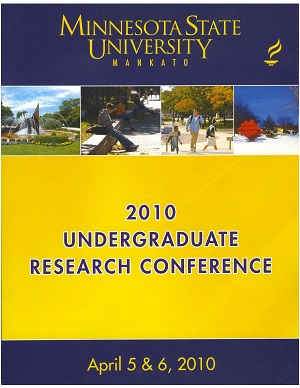Race and Religion Relating to Helping Behaviors
Location
CSU 201
Start Date
5-4-2010 10:00 AM
End Date
5-4-2010 12:00 PM
Student's Major
Psychology
Student's College
Social and Behavioral Sciences
Mentor's Name
Kristie Campana
Mentor's Department
Psychology
Mentor's College
Social and Behavioral Sciences
Description
Racial attributes have been explored in different ways, such as differences in pro-social behaviors demonstrated toward white Americans compared to black Americans (Crosby, Bromley& Saxe, 1980). Previous research suggests that white racism is a centuries-old system which was designed to oppress blacks and other people of color and also to exclude them from participating in the society; however, this process may function at an unconscious level (Feagin, Vera, & Batur, 2001). At this time, research has not explored how race might interact with religion in prosocial behaviors. Given previous research, it is possible that an indication of a minority religion (e.g. a head scarf) may affect how both black and white people are helped by others. In the current study we hypothesized that individuals are more likely to help a white person compared to a black person. Likewise, we expect individuals are more likely to help a person who was not wearing a headscarf versus someone who was wearing a headscarf. Results are pending. The findings of this study will have a number of practical implications in terms of how race and religion influence prosocial behaviors.
Race and Religion Relating to Helping Behaviors
CSU 201
Racial attributes have been explored in different ways, such as differences in pro-social behaviors demonstrated toward white Americans compared to black Americans (Crosby, Bromley& Saxe, 1980). Previous research suggests that white racism is a centuries-old system which was designed to oppress blacks and other people of color and also to exclude them from participating in the society; however, this process may function at an unconscious level (Feagin, Vera, & Batur, 2001). At this time, research has not explored how race might interact with religion in prosocial behaviors. Given previous research, it is possible that an indication of a minority religion (e.g. a head scarf) may affect how both black and white people are helped by others. In the current study we hypothesized that individuals are more likely to help a white person compared to a black person. Likewise, we expect individuals are more likely to help a person who was not wearing a headscarf versus someone who was wearing a headscarf. Results are pending. The findings of this study will have a number of practical implications in terms of how race and religion influence prosocial behaviors.
Recommended Citation
Ahmed, Sahra. "Race and Religion Relating to Helping Behaviors." Undergraduate Research Symposium, Mankato, MN, April 5, 2010.
https://cornerstone.lib.mnsu.edu/urs/2010/oral-session-02/3



